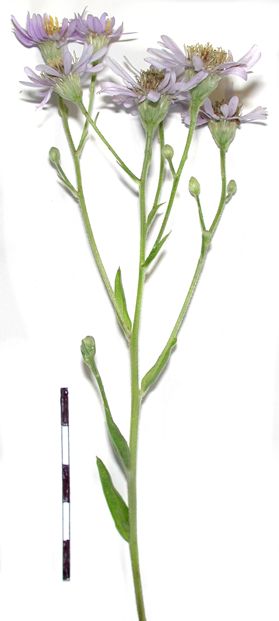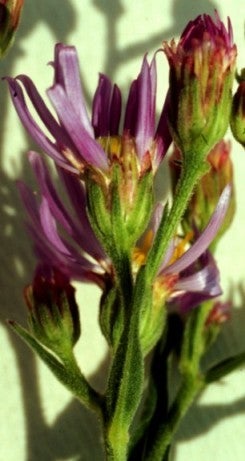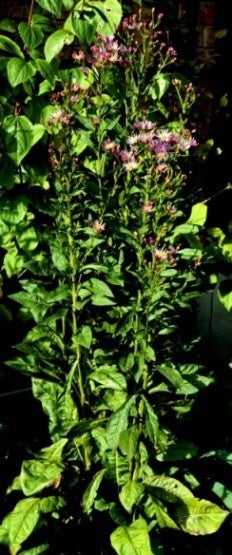This is an unusual x=9 species of aster with very large scabrous basal leaves native to southern Siberia. It is cultivated in North America, where it occasionally can be found as an escape in the eastern United States, where the plants are hexaploids (Semple et al. 2002). It has a large robust habit that is vegetatively more similar to some species of goldenrods than to North American asters. Its rhizomes can spread aggressively taking over a flower bed. Its heads have violet to rosy-purple rays and bloom late in the season, barely before the first frost in Ontario.







